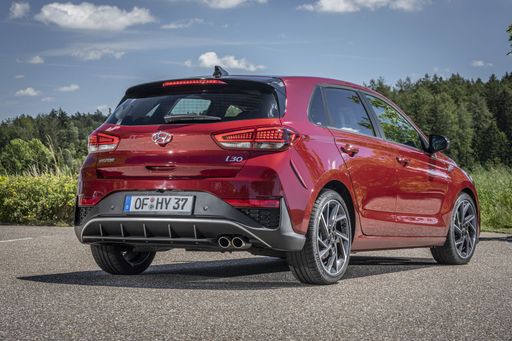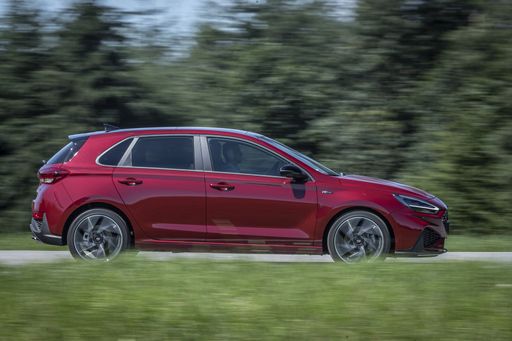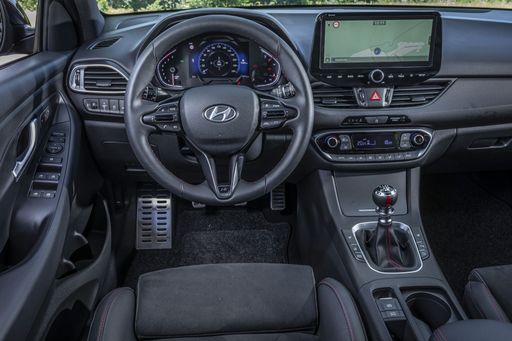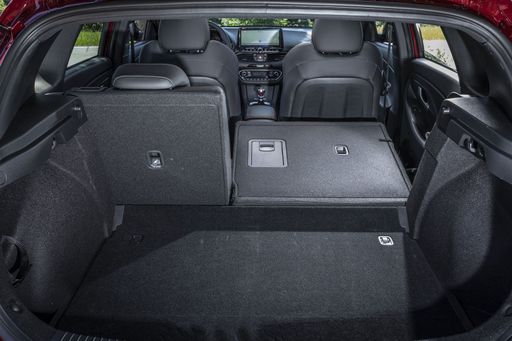Hyundai i30 vs BYD Seal 6 – Differences & prices compared
Two cars, one duel: Hyundai i30 meets BYD Seal 6.
Which one wins in performance, efficiency and value for money? Find out now!
Costs and Efficiency:
Price and efficiency are key factors when choosing a car – and this is often where the real differences emerge.
Hyundai i30 has a decisively advantage in terms of price – it starts at 24000 £, while the BYD Seal 6 costs 36800 £. That’s a price difference of around 12857 £.
Fuel consumption also shows a difference: BYD Seal 6 manages with 1.70 L and is therefore decisively more efficient than the Hyundai i30 with 5.70 L. The difference is about 4 L per 100 km.
Engine and Performance:
Power, torque and acceleration say a lot about how a car feels on the road. This is where you see which model delivers more driving dynamics.
When it comes to engine power, the BYD Seal 6 has a evident edge – offering 212 HP compared to 140 HP. That’s roughly 72 HP more horsepower.
In acceleration from 0 to 100 km/h, the BYD Seal 6 is a bit quicker – completing the sprint in 8.50 s, while the Hyundai i30 takes 9.60 s. That’s about 1.10 s faster.
In terms of top speed, the Hyundai i30 performs slight better – reaching 197 km/h, while the BYD Seal 6 tops out at 180 km/h. The difference is around 17 km/h.
Space and Everyday Use:
Cabin size, boot volume and payload all play a role in everyday practicality. Here, comfort and flexibility make the difference.
Both vehicles offer seating for 5 people.
In curb weight, Hyundai i30 is distinct lighter – 1291 kg compared to 1710 kg. The difference is around 419 kg.
In terms of boot space, the BYD Seal 6 offers evident more room – 500 L compared to 395 L. That’s a difference of about 105 L.
In maximum load capacity, the BYD Seal 6 performs somewhat better – up to 1535 L, which is about 234 L more than the Hyundai i30.
When it comes to payload, Hyundai i30 somewhat takes the win – 509 kg compared to 435 kg. That’s a difference of about 74 kg.
Who comes out on top?
Overall, the BYD Seal 6 shows itself to be dominates this comparison and secures the title of DriveDuel Champion.
It convinces with the more balanced overall package and proves to be the more versatile choice for everyday use.
BYD Seal 6
Hyundai i30
The Hyundai i30 stands out in the hatchback segment with its sleek design and modern features. It offers a comfortable ride with a well-crafted interior that caters to both driver and passengers. With its emphasis on safety and technology, the i30 provides a balanced driving experience suitable for urban and suburban environments.
details @ hyundai.news
@ hyundai.news
 @ hyundai.news
@ hyundai.news
 @ hyundai.news
@ hyundai.news
 @ hyundai.news
@ hyundai.news
 @ hyundai.news
@ hyundai.news
BYD Seal 6
The BYD Seal 6 is a captivating electric sedan that captures attention with its sleek design and modern aerodynamics. With a strong focus on sustainability, it offers an impressive electric driving experience, combining efficiency with cutting-edge technology. The Seal 6 stands out in the EV market for its luxurious interior and innovative features, making it a strong contender for drivers looking to embrace the future of transportation.
details

|
|
|
|
|
Costs and Consumption |
|
|---|---|
|
Price
24000 - 29300 £
|
Price
36800 - 42800 £
|
|
Consumption L/100km
5.7 - 6 L
|
Consumption L/100km
1.7 - 2.6 L
|
|
Consumption kWh/100km
-
|
Consumption kWh/100km
-
|
|
Electric Range
-
|
Electric Range
50 - 100 km
|
|
Battery Capacity
-
|
Battery Capacity
-
|
|
co2
130 - 136 g/km
|
co2
38 - 60 g/km
|
|
Fuel tank capacity
50 L
|
Fuel tank capacity
65 L
|
Dimensions and Body |
|
|---|---|
|
Body Type
Hatchback
|
Body Type
Estate
|
|
Seats
5
|
Seats
5
|
|
Doors
5
|
Doors
5
|
|
Curb weight
1291 - 1407 kg
|
Curb weight
1710 - 1805 kg
|
|
Trunk capacity
395 L
|
Trunk capacity
500 L
|
|
Length
4340 mm
|
Length
4840 mm
|
|
Width
1795 mm
|
Width
1875 mm
|
|
Height
1455 mm
|
Height
1505 mm
|
|
Max trunk capacity
1301 L
|
Max trunk capacity
1535 L
|
|
Payload
463 - 509 kg
|
Payload
435 kg
|
Engine and Performance |
|
|---|---|
|
Engine Type
Petrol, Petrol MHEV
|
Engine Type
Plugin Hybrid
|
|
Transmission
Manuel, Automatic
|
Transmission
Automatic
|
|
Transmission Detail
Manual Gearbox, Dual-Clutch Automatic
|
Transmission Detail
CVT
|
|
Drive Type
Front-Wheel Drive
|
Drive Type
Front-Wheel Drive
|
|
Power HP
100 - 140 HP
|
Power HP
184 - 212 HP
|
|
Acceleration 0-100km/h
9.6 - 13.1 s
|
Acceleration 0-100km/h
8.5 - 8.9 s
|
|
Max Speed
178 - 197 km/h
|
Max Speed
180 km/h
|
|
Torque
172 - 253 Nm
|
Torque
-
|
|
Number of Cylinders
3 - 4
|
Number of Cylinders
4
|
|
Power kW
74 - 103 kW
|
Power kW
135 - 156 kW
|
|
Engine capacity
998 - 1482 cm3
|
Engine capacity
1498 cm3
|
General |
|
|---|---|
|
Model Year
2024
|
Model Year
2025
|
|
CO2 Efficiency Class
D, E
|
CO2 Efficiency Class
B
|
|
Brand
Hyundai
|
Brand
BYD
|
What drive types are available for the Hyundai i30?
Available configurations include Front-Wheel Drive.
The prices and data displayed are estimates based on German list prices and may vary by country. This information is not legally binding.
